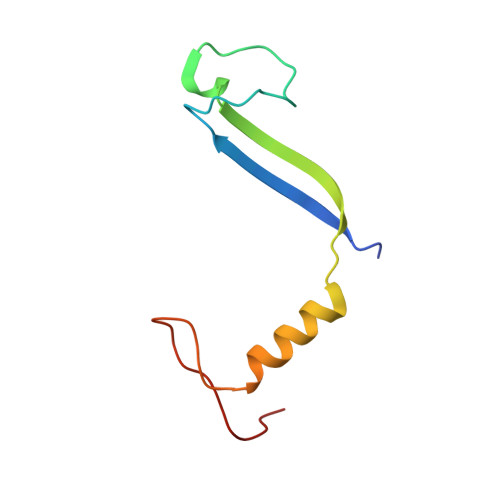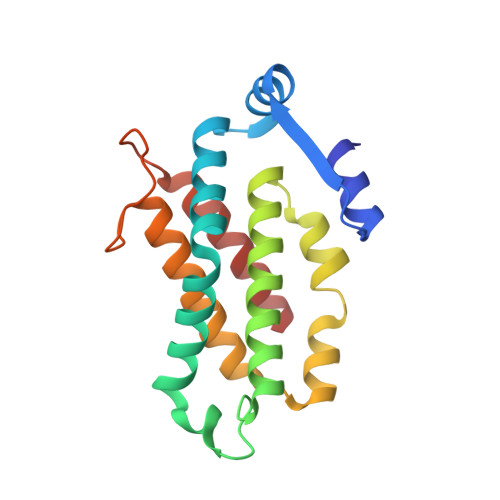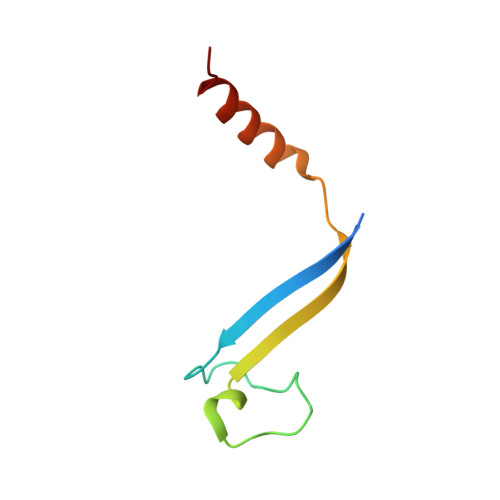Molecular dissection of the soluble photosynthetic antenna from the cryptophyte alga Hemiselmis andersenii.
Rathbone, H.W., Laos, A.J., Michie, K.A., Iranmanesh, H., Biazik, J., Goodchild, S.C., Thordarson, P., Green, B.R., Curmi, P.M.G.(2023) Commun Biol 6: 1158-1158
- PubMed: 37957226
- DOI: https://doi.org/10.1038/s42003-023-05508-4
- Primary Citation of Related Structures:
7SUT, 8EL3, 8EL4, 8EL5, 8EL6 - PubMed Abstract:
Cryptophyte algae have a unique phycobiliprotein light-harvesting antenna that fills a spectral gap in chlorophyll absorption from photosystems. However, it is unclear how the antenna transfers energy efficiently to these photosystems. We show that the cryptophyte Hemiselmis andersenii expresses an energetically complex antenna comprising three distinct spectrotypes of phycobiliprotein, each composed of two αβ protomers but with different quaternary structures arising from a diverse α subunit family. We report crystal structures of the major phycobiliprotein from each spectrotype. Two-thirds of the antenna consists of open quaternary form phycobiliproteins acting as primary photon acceptors. These are supplemented by a newly discovered open-braced form (~15%), where an insertion in the α subunit produces ~10 nm absorbance red-shift. The final components (~15%) are closed forms with a long wavelength spectral feature due to substitution of a single chromophore. This chromophore is present on only one β subunit where asymmetry is dictated by the corresponding α subunit. This chromophore creates spectral overlap with chlorophyll, thus bridging the energetic gap between the phycobiliprotein antenna and the photosystems. We propose that the macromolecular organization of the cryptophyte antenna consists of bulk open and open-braced forms that transfer excitations to photosystems via this bridging closed form phycobiliprotein.
Organizational Affiliation:
School of Physics, The University of New South Wales, Sydney, NSW, 2052, Australia.























